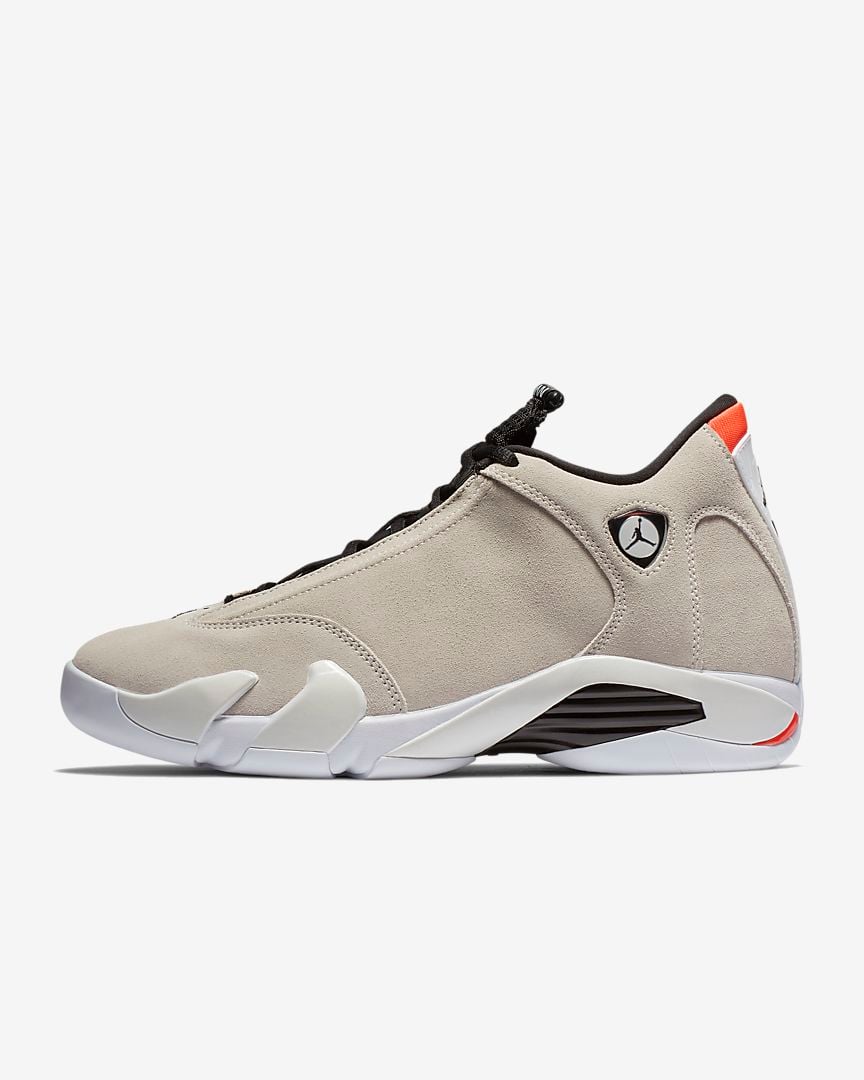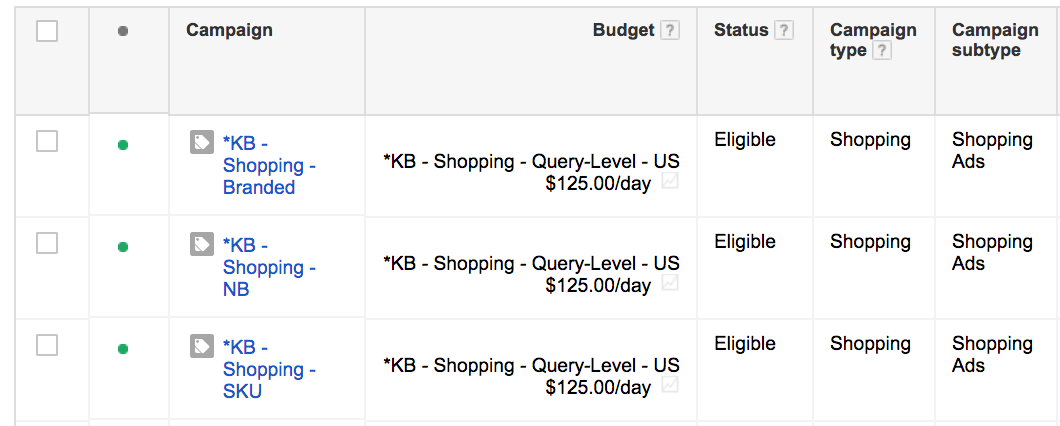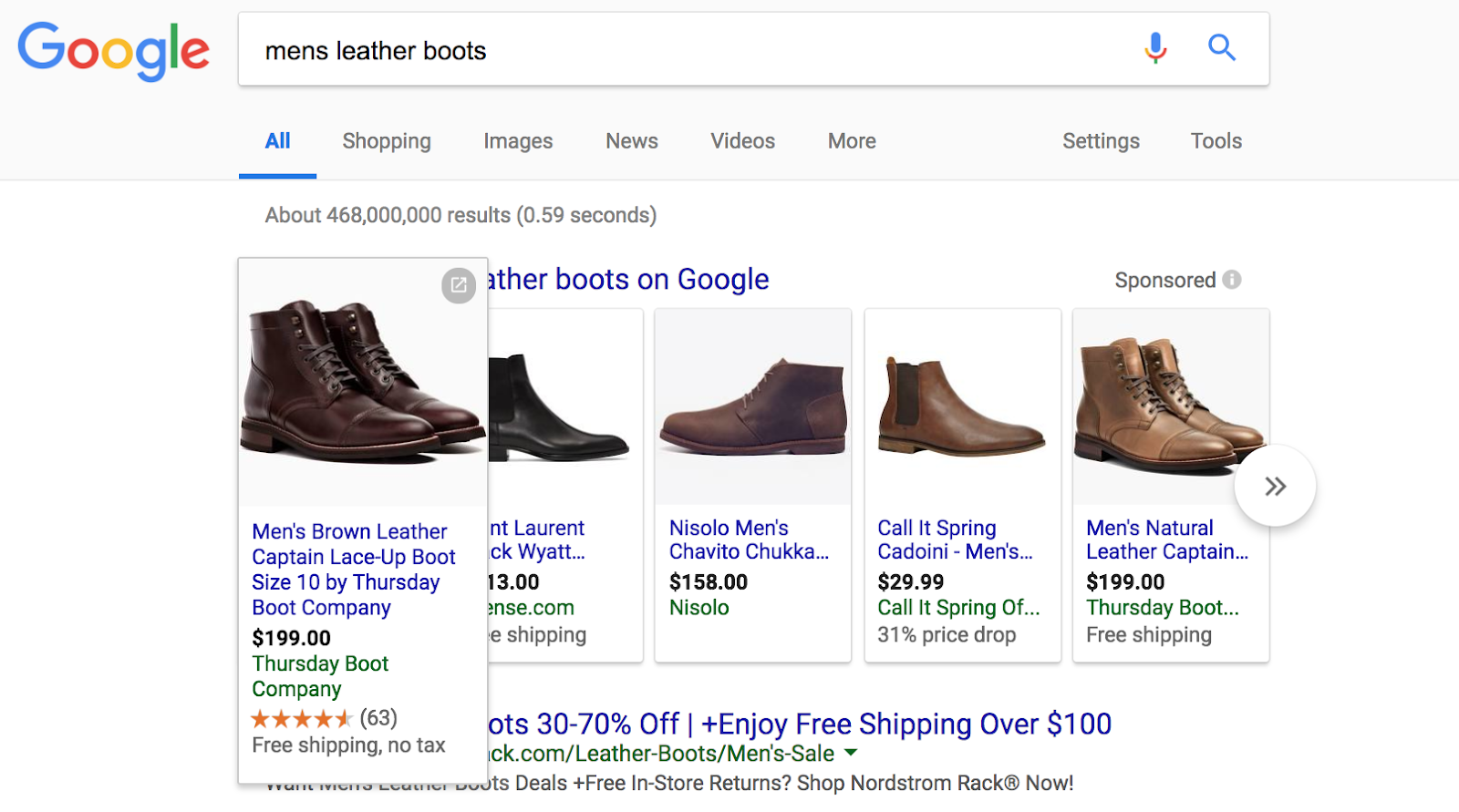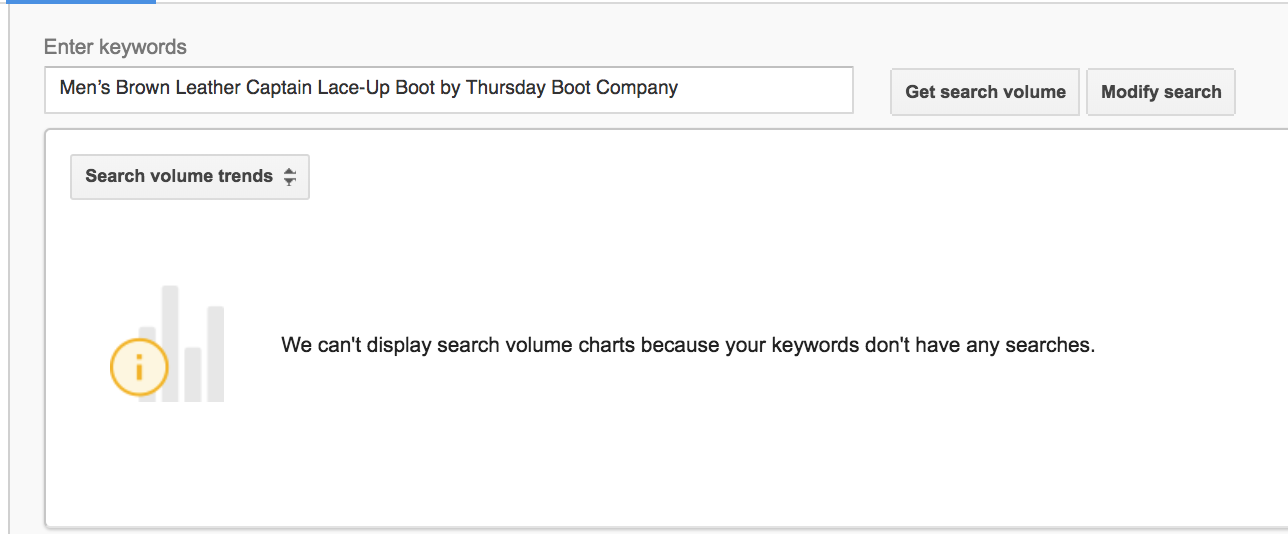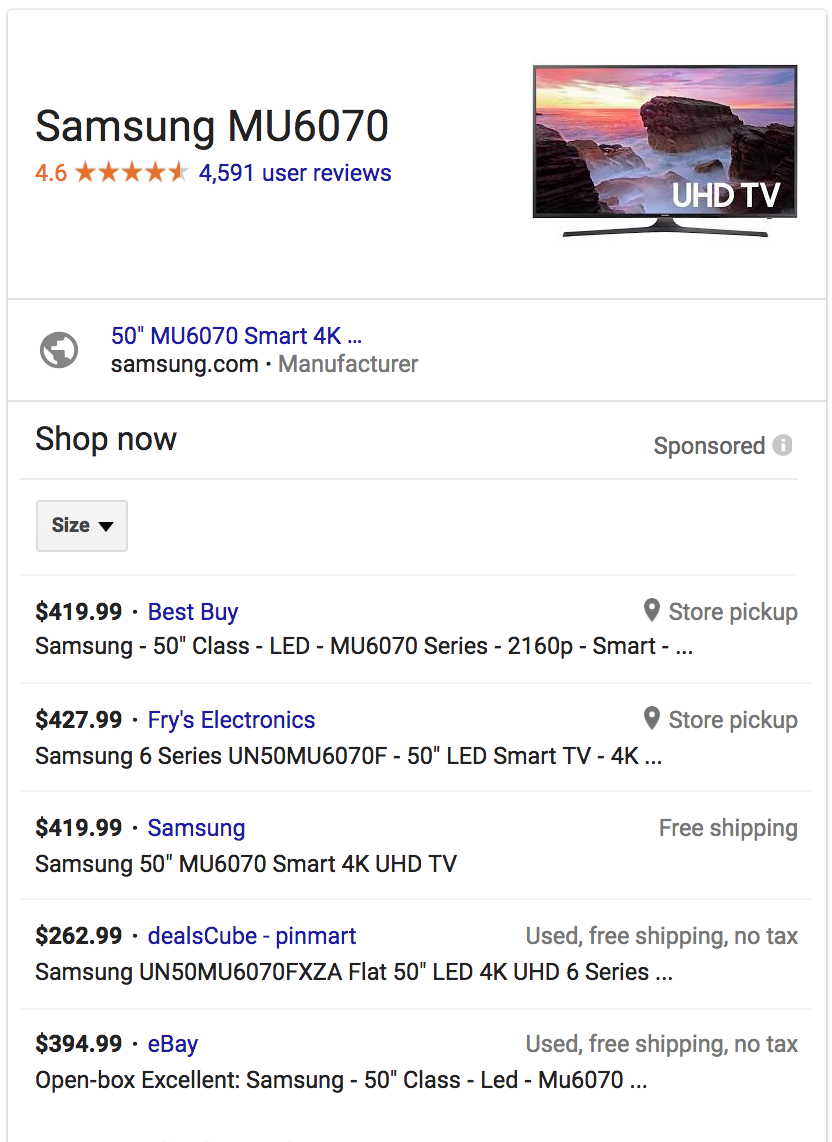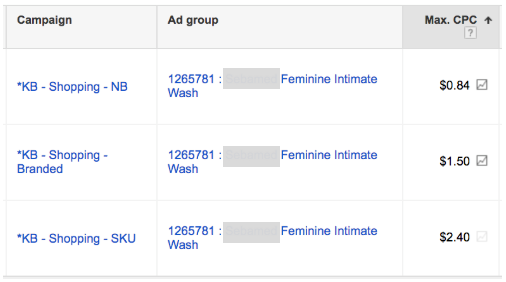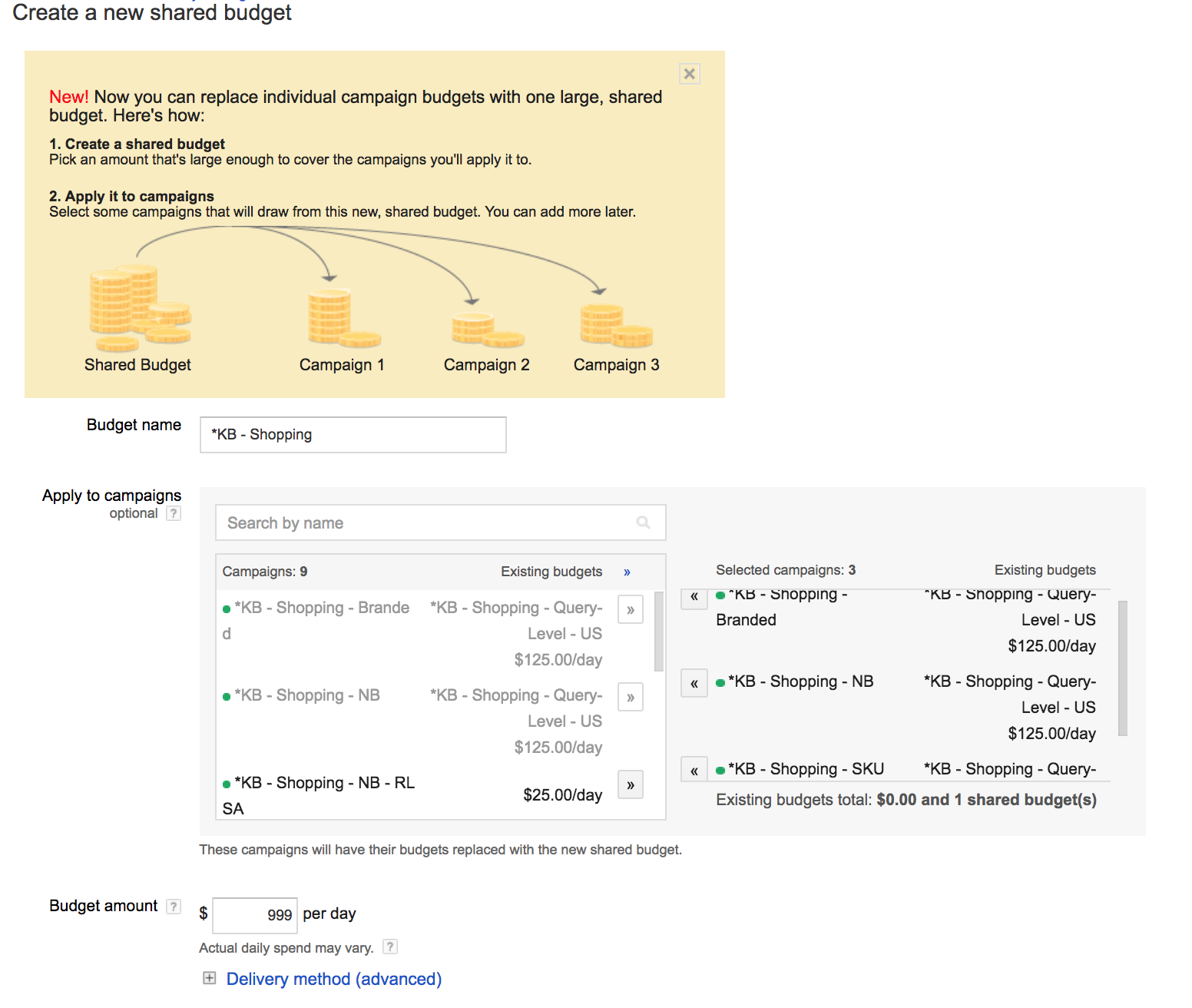Contrary to how it sounds, the Gold Pan Technique isn’t for old-timey prospectors.
It’s for serious marketers who are looking to drive more profitability from their Google Shopping campaigns.
Get brand new Google ad strategies straight to your inbox every week. 23,739 people already are!
Why The Need To Pan For Gold?
Google Shopping campaigns can bring tons of traffic to your products.
And a lot of that traffic is dirt.
Don’t believe me? Without the proper controls, your Shopping campaigns can be overrun by something called the Mob Effect. Here’s the short version: you can end up spending the bulk of your budget on products and searches that aren’t even selling.
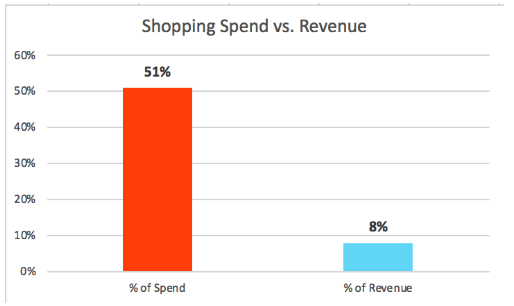
But there are some serious gold nuggets within that dirt -- gold nuggets that represent profitable Shopping campaigns. More importantly, there’s a system you can use to hone in on these nuggets.
It’s called The Gold Pan Technique.

Using the Gold Pan Technique can take your Shopping campaigns’ results from the high-spend, low-revenue example we saw above to something that looks more like this:
Let’s dig into why so many Shopping campaigns start off on the wrong foot, and how to make them right.
The Problem With Shopping Campaigns
If you’ve had any traction with getting sales from Search campaigns, you probably know that the closer someone’s search matches your product, the more likely you are to get a sale.
For example, let’s say someone walks into your store and you’re hoping to sell them this shoe:
If someone says they just want a pair of “shoes,” it’s a shot in the dark. They may or may not be interested in this specific pair of Jordans.
But when someone else walks in and says they’re looking for a pair of Jordans, there’s a decent chance that they're interested in this pair among the other models you carry.
And if you have a customer who walks in and asks specifically for the Air Jordan 14 Retro in size 11, the sale is basically a done deal, because it’s an exact match to a specific request.
So, how does this translate to your Google Ads strategy?
Search campaigns make it easy to follow these examples, because they allow you to distinguish between a generic product, a specific brand, and a particular model with keywords. And because those keywords are tied to specific bids, this also affects your profits.
Now, here’s the problem with Shopping campaigns. Shopping campaigns don’t have a built-in way for you to control your search queries.
And because the quality of a search query can have a direct effect on the likelihood of a sale, this lack of control also affects your profits.
The Gold Pan Technique gives you that control back.
Let’s start sifting through it. ;)
Why The Gold Pan Technique Will Save Your Shopping Profits
Just like the name sounds, the Gold Pan Technique makes it easier for you to pan through the less profitable search terms and get right to the nuggets: high intent searches that are meant for your products.
The Gold Pan Technique is so effective is because it allows us to do something Shopping campaigns don’t do naturally: segment traffic by generic, branded, and product-specific searches. It's not quite the granularity of keyword-level control, but it's pretty darn close.
The results of this segmentation appear across different types of traffic. Here’s an example of results between branded and non-branded shopping traffic:
Using multiple shopping campaigns in combination with a few advanced settings makes this system even more effective:
You’ll use this multi-campaign setup to funnel your higher-intent searches toward campaigns precisely meant to bring you those gold nuggets. Therefore, you should make sure that your campaigns have a matching ad group and product group structure so you can measure results consistently across campaigns.
This also makes the setup easier since you can copy and paste the structures in AdWords Editor.
Within this setup, you can base your ad group / product group structure off of SPAGs, categories, or whatever makes the most sense for your business. It just has to match. Also, the structure should be established before we dive into the Gold Pan Technique.
You’ll also want to understand how many campaigns you should use based on the products you’re selling because this affects your setup.
How Many Campaigns Do You Need For the Gold Pan Technique?
Because there are such clear distinctions between generic, branded, and product-specific searches (and because of the example above), it’s easy to assume that you should create three campaigns.
But that’s not always the case. And the reason is pretty simple. There are many industries where people simply don’t do enough product-specific searches.
Quick example:
Do you think enough people are doing EXACT searches for “Men’s Brown Leather Captain Lace-Up Boot Size 10 by Thursday Boot Company” to warrant a third layer of specific segmentation in their campaigns?
Probably not. And the Google Keyword Planner can back that up:
When it’s obvious that people don’t search for your products by full name, use a two-campaign structure. This will be the best for you to get to your gold nuggets faster.
On the other hand, you may want a product-specific campaign if you’re selling devices or electronics. In these situations, people are likelier to search for a model number or SKU, especially if they have an exact product in mind.
So if you sell devices/appliances, give yourself the advantage of SKU-level segmentation. Otherwise, don’t build an unnecessary campaign layer.
Now, let’s get into the actual setup.
How The Gold Pan Technique Works
To segment your Shopping traffic between the dirt and the nuggets, you’ll need a few key ingredients.
First, depending on your industry, you’ll need either two or three Shopping campaigns.
Then you’ll need to combine these with Shopping campaign priority settings, shared negative keyword lists, different bids across your campaigns, and a shared budget to tie everything together.
By themselves, these ingredients may not make much sense. But here’s a preview of what we’re working toward:
Because there’s a little bit more detail involved in setting up a three-campaign structure, we’ll use this as the example. If you only need two campaigns, just ignore the setup for the SKU campaign.
Set Up Shopping Campaign Priorities
The first thing you’ll need to set up across your three campaigns is priorities.
When you have multiple campaigns that contain products (just like you will in this structure), priorities tell Google which campaign should serve an ad first in the order of High, Medium, and Low:
And if you remember the table above, you probably noticed that the generic campaign gets the highest priority. No, that’s not a typo.
There are two main reasons. First, we want to be able to capture all traffic that the product feed is optimized for so that the campaign’s potential isn’t limited. To do this, we have to give the generic campaign the highest priority.
The second reason is that we’ll be using these priorities against shared negative keyword lists in order to create a sort of funnel -- in other words, the strainers needed to make our gold pan work.
So, to finish this first step, you’ll set your priorities like this:
- Generic Campaign - High Priority
- Brand Campaign - Medium Priority
- SKU Campaign - Low Priority
Use Shared Negative Keyword Lists To Funnel Your Searches
Now that your priorities are organized, creating shared negative keyword lists can drive your higher-intent traffic to the appropriate campaign. You’ll need a shared negative keyword list for:
- Universal negatives (search terms that are never relevant) to apply to all campaigns
- Brand negatives that apply to the Generic campaigns and block it from gaining brand traffic
- SKU negatives that apply to the Generic and Brand campaigns to block them from taking that traffic
Pro Tip: Don’t apply anything other than universal negatives to your SKU campaign. The shared negatives for the other campaigns will block the bulk of irrelevant traffic from showing up here.
You won’t want to apply brand negatives here, because that could block a search that contains both your brand and SKU number in the same search.
So, you should have shared negatives that look like this:
The only campaign that should have all of these lists is the Generic campaign. The Brand should have SKU and Universal negatives, while the SKU only has universal.
Now let’s talk about your bids.
Adjust Your Bids For Profits
We’re closing in on the real magic of the Gold Pan Technique.
Before, you couldn’t bid differently for different kinds of search terms in your Shopping campaigns. But now you can bid differently at the Generic, Brand, and SKU level. And once you see how much higher your brand and SKU ROAS is, why wouldn’t you?
So, your bids across these campaigns will look something like this:
- Generic Campaign - Lowest Bid
- Brand Campaign - Medium Bid
- SKU Campaign - Highest Bid
Here’s a real example:
You’ll notice these products have 60-80% differences in their bids from one campaign to the next.
If your bids are set too close together, or even in inverse order with Generic having the highest bids, Google may ignore your priority settings and serve traffic to the wrong campaign. (That's the opposite of panning for gold.)
Tie It Together With A Shared Budget
You may be curious as to why I'm suggesting a shared budget if you're juggling multiple campaign types.
That's another good question, but let's consider the opposite scenario first.
Say you dedicate a specific budget to each of these campaigns. Your Generic campaign is going to gain the most traffic because it has the most potential traffic volume -- it’s not on the hunt for just brand or SKU-level searches.
So let’s say that, because your Generic campaign is getting the most traffic, it exhausts its daily budget before the other campaigns.
Since it’s not practical or feasible to have exact, non-brand negatives for every possible search that your products could trigger, your Brand and SKU campaigns start pulling in generic traffic.
That’s where your ROAS starts dropping, and once again, you’re no longer panning for gold.
That’s why shared budgets are important here. A shared budget ensures that all three (or two) of your campaigns always belong to the same auction. This will prevent the scenario we just discussed and ensure that your higher-intent traffic is funneled to the right campaign in each auction.
To create your shared budget, just go to the shared library and add a new budget. Pretty straightforward.
Here’s an example of what the setup looks like:
Including this last setting will make sure your Shopping campaigns always stay within the same auctions. This way, you won’t have to worry about your Brand and SKU campaigns picking up irrelevant traffic for budget reasons.
Gold Pan Technique Recap: Pan Your Way To Shopping Sales
At this point, you should have three (or two) separate shopping campaigns dedicated to receiving Generic, Brand, and SKU traffic. As you collect data, you’ll want to stay mindful of some common pitfalls.
Keep an eye on your search terms to ensure each campaign is picking up the right search queries. If you’re seeing generic search terms in Brand or SKU campaigns, make sure that you’ve added a shared budget for all three, and that your bids are distinguished enough across each campaign for the traffic to remain segmented.
If you’re not getting enough traffic, make sure generic bids are high enough, and that your Brand and SKU bids are proportionately higher.
Following these rules should lead to campaign differentials that look like this:
And, over time, your overall results will start to look like this:
Now, start panning for that gold.


